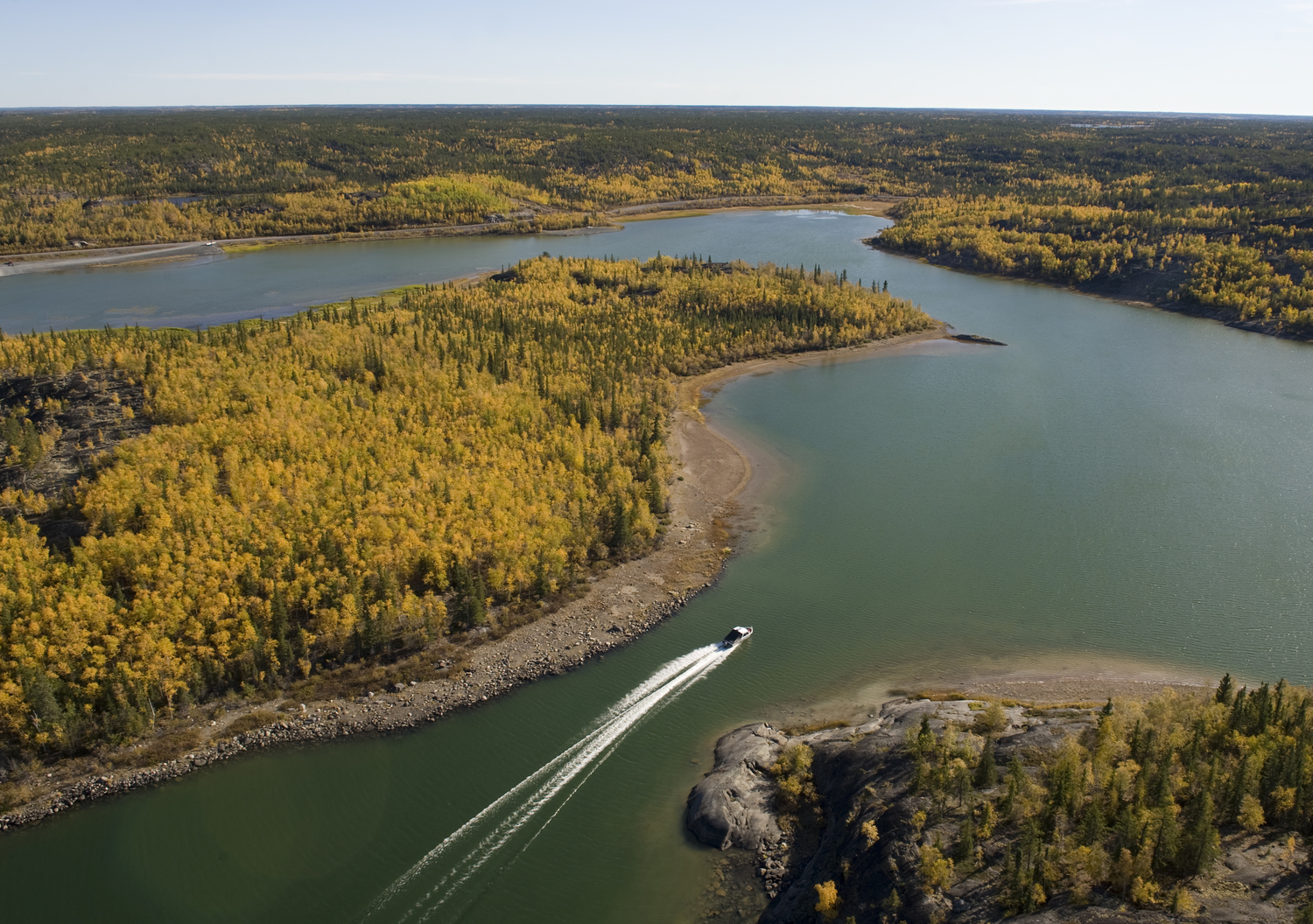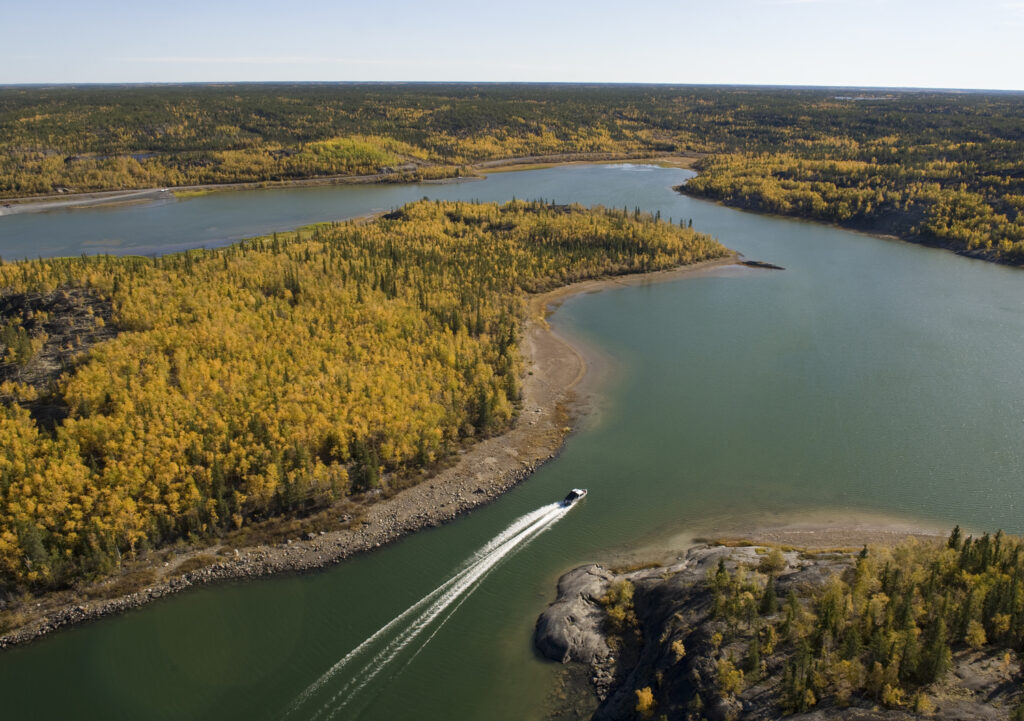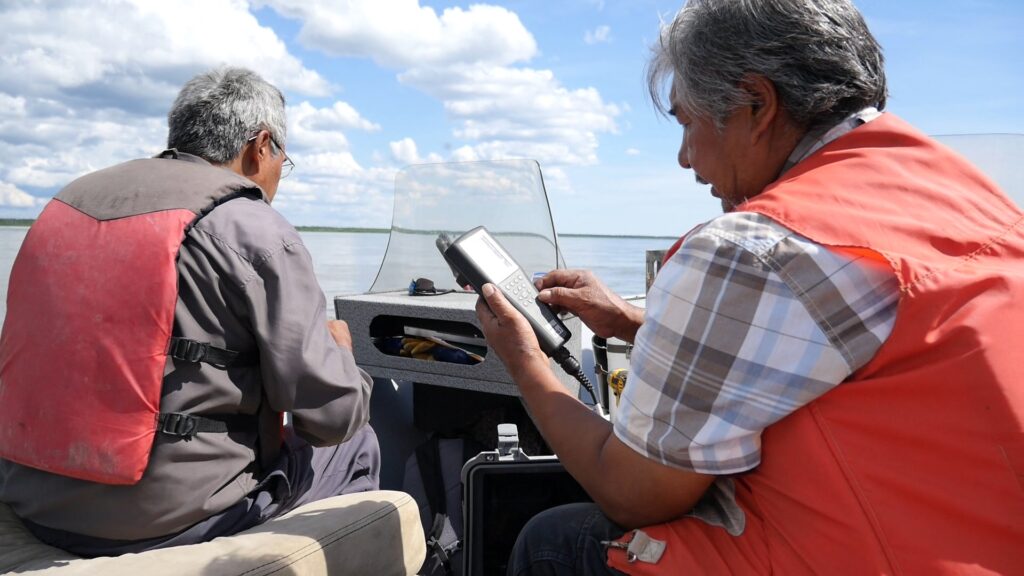
On World Rivers Day, we’re highlighting the majestic Mackenzie River, also known as the Deh Cho to the Dene people. The river has great spiritual and cultural significance to the Dene community.
Despite its importance, only 1 in 100 Canadians will ever see the Mackenzie River. So, here are five facts to help you get to know the Mackenzie River.
1. The Mackenzie River is the largest river in Canada.
It’s called the Cold Amazon for a reason – the Mackenzie River is huge. At 4,241 km in length when including its tributaries, the Mackenzie is the 11th longest river in the world, spanning from Great Slave Lake to the Arctic Ocean. In total, the Mackenzie River Basin covers 1.8 million km2 , which is the size of Germany, France, Spain, and Poland combined. That’s one big river, and a whole lot of water!

Fall colours in the Mackenzie River Basin – credit Pat Kane
2. The Mackenzie River helps control climate.
About 11% of freshwater flowing into the Arctic Ocean comes from the Mackenzie, which impacts the ocean’s temperature and sea ice formation. Sea ice in the north has a powerful refrigerating effect that influences the continent’s climate. When sea ice declines, the temperature difference between the poles and tropics can increase storms, flooding, and droughts in the south. Changes in water flow through the Mackenzie River can impact climate across the world.

The Mackenzie River Basin spans three provinces and two territories and makes up 20% of Canada’s land mass.
3. The Mackenzie River is a highway.
In summer, the Mackenzie River flows with boats of all sizes on its waters. But in the winters of the Northwest Territories, temperatures can plummet to -40°C. The frigid conditions create ice sheets four feet thick, turning parts of the Mackenzie into a highway.
The frozen Mackenzie provides access to communities such as Fort Good Hope, Norman Wells, and Tulita, only accessed via plane or boat in the summer. Trucks up to 22,000 pounds navigate the icy roadways, providing important supplies for riverside communities.
4. The Mackenzie River is rich in biodiversity.
During calving season, over 5000 beluga whales bathe in the Mackenzie Delta. The river is home to a diverse range of fish including Cchinook salmon, trout, pike, walleye, and Arctic grayling. Some 26 migratory bird species depend on the watershed. Caribou are a key part of the Mackenzie food web, along with herds of reindeer that migrate through the basin. Other iconic species include beaver, lynx, fox, and muskrats.

Dehcho K’ehodi Guardians use a YSI to measure pH, dissolved oxygen and temperature as part of the NWT-wide CBM program. Credit Lindsay Day.
5. DataStream started in the Mackenzie River Basin.
About 10 years ago, communities stewarding the Mackenzie River Basin identified that a major barrier to protecting freshwater was a lack of access to data. So, in 2016, we teamed up with the Government of the Northwest Territories to create Mackenzie DataStream. Eight years later, the open access hub holds data from almost 3,000 sites across the Mackenzie River Basin, including data collected by the NWT-wide Community-based Water Quality Monitoring Program. Over the years, DataStream has grown exponentially, now with five data hubs from coast to coast across Canada. But as we continue to grow, we will always remember our roots in the Mackenzie River Basin.
World Rivers Day is a day to celebrate and encourage the stewardship of rivers around the globe. To find out more about sharing data on Mackenzie DataStream or our other hubs, please get in touch.


